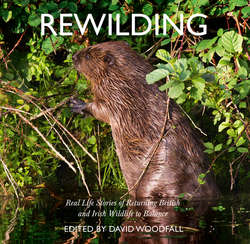Читать книгу Rewilding - David Woodfall - Страница 18
ОглавлениеOak trees and Ennerdale lake.
Wild Ennerdale: Shaping the‘Future Natural’
Rachel Oakley
Everywhere you look there is hope; something blossoming, or growing, or recovering, or just being there in balance with nature.
Simon Webb,
Natural England and Wild Ennerdale
Hope is essential for anyone involved in nurturing our landscapes. Channelling that optimism into delivering real change takes an open mind, patience, courage and resilience. Multiply that among a group of people to make things happen and that energy can be a powerful tool and reap great rewards for a place.
Ennerdale allows us to nurture aspirations. It has a unique beauty within the Lake District landscape where forest, rivers, lakes, mountains, woodland, wildlife and people combine to give a sense of nature being in charge. It’s a landscape that’s seen the ebb and flow of human activity for thousands of years and is far from being ecologically pristine.
In the late 1990s, discussions started about how to do things a little differently in Ennerdale, triggered by the changing economics of commercial forestry and farming, along with a new staff member for National Trust. Wild Ennerdale began as a concept in 2003, establishing both a partnership and a set of guiding principles. The partnership brought together the three largest landowners with the principal aims of working at a landscape scale (covering 4,700 ha) with more freedom for natural processes. Key to the vision was people:
To allow the evolution of Ennerdale as a wild valley for the benefit of people, relying more on natural processes to shape its landscape and ecology.
Over the last two decades we have engaged with many different audiences and advocates, from local school children to key government advisors. Each experience is different and a learning opportunity for us. What is consistent is that we need to continue with what we are doing and do more of it – for nature’s sake and our own. The benefits of connecting with nature for health and well-being are well documented. We are learning, too, how nature can deliver more for us through better functioning ecosystems. This was most apparent when Storm Desmond hit Cumbria in 2015 and had a devastating impact on many communities. The clean-up in the aftermath at Ennerdale was negligible, while around the county the recovery remains ongoing, with millions of pounds spent on rebuilding visitor infrastructure and flood defences.
Natural processes are a key driver for our ambition. It’s a term we can now illustrate through practical delivery. While our starting point isn’t ‘ecologically pure’, there are processes at work which we can facilitate through more (or sometimes less) intervention to evolve from one state to another.
A shift away from Sitka spruce is one example and none have been planted within the last decade. While the existing non-native spruce will always be a part of the Ennerdale landscape (and indeed tell a story of its industrial past), there are now more broadleaf species of oak, rowan, alder, holly, aspen and birch, along with thousands of juniper. Many have been actively planted by volunteers and contractors. In other parts of the valley, trees are flourishing naturally from seed, aided by grazing Galloway cattle. A small herd of nine cows was introduced in 2006 and now graze extensively (about 40 cattle) over 1,000 ha of the valley. These hardy cattle, combined with a reduction in sheep numbers, are changing the farmed landscape. Simply having a more varied forest with scrubby ground vegetation of species offering depth, structure, colour, shelter and habitat – along with a large herbivore grazing and disturbing within – is an achievement in itself. Harsh boundaries between farmland and forest are starting to blur and new habitats are expanding and recovering upslope beyond existing treelines.
Cladonia lichen with red fruiting bodies.
The River Liza is a formidable force within the valley. It’s rare in a Lake District context, having the freedom to function naturally along its entire length: from its source at the valley head, through the heart of the middle valley to the lake at Ennerdale Water. It asserts its route with dynamism and energy and has space to connect to its floodplain. The obvious benefits this river delivers is inspiring to observe, particularly after high-rainfall events, with the majority of debris shifted and deposited in the upper valley, well away from the lake downstream and communities beyond. Large boulders, gravels, silts, scrubby vegetation, trees (all shapes and sizes) are on a journey of destruction and creation within a constantly changing river system. In terms of intervention it needs very little, but that in itself is active management. Where existing barriers did exist (such as a concrete ford in a tributary to the Liza), we’ve removed them. This aided the natural flow of that mountain tributary into the Liza along with the gravels and vegetation it carries. It has also opened up 5 km of new spawning habitat for migrating fish. Along the riparian corridor, the reintroduced marsh fritillary butterfly is now thriving, as wetlands increase and the host plant devil’s bit scabious is plentiful.
Whatever we do in the valley and wherever we do it, the impacts of our actions are considered across the whole landscape. It’s a balancing act on a big scale, where people and nature are so intrinsically linked that they shouldn’t be viewed as separate entities, but rather as processes working more in harmony to encourage a more diverse, healthy and resilient landscape into the future.
Rewilding should be challenging, but not at the expense of action. It is the responsibility of all those of us involved in helping to look after the land to ensure our actions are suited to that unique location, understand our starting point and to tailor different approaches accordingly. By engaging people along that journey, whether advocates or critics, the ambition can become a reality and whatever uncertainties lie ahead, there’s optimism that we are on the right track.
